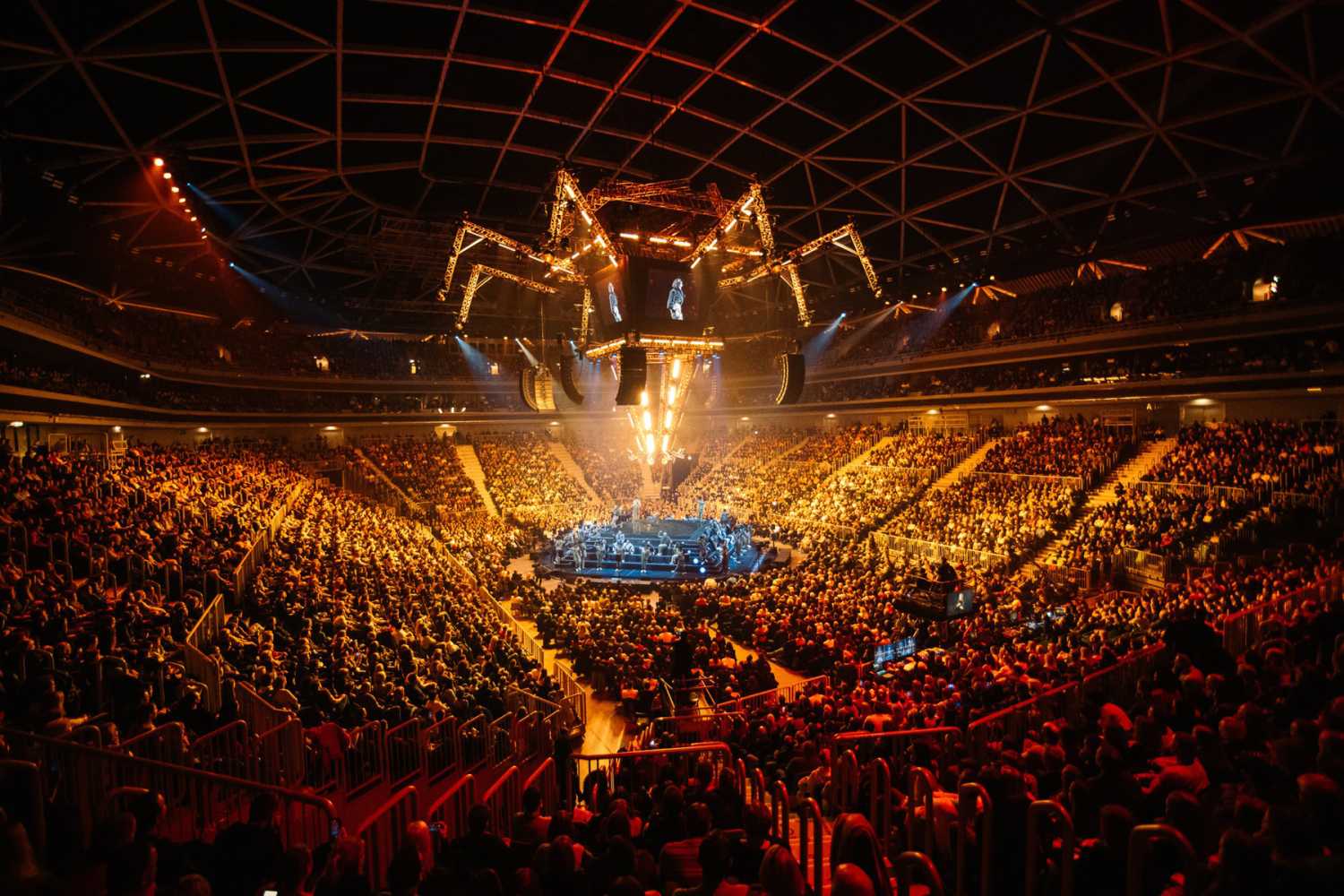ChamSys MagicQ connects Slovenska Muska
- Details

Like the star and his many guests on stage, the production team that supported this show at the sold-out Arena Stožice in Ljubljana aimed high, creating a 360-degree stage and working with hang points that reach 34m. And just like him, they delivered a spot-on performance, thanks to the inspired efforts of director Nejc Levstik, set designer Greta Godnic, and TD Rok Lozar, along with lighting designer/programmer Crt Birsa and his ChamSys MagicQ Stadium Connect.
“This was the first 360-degree stage in the history of Arena Stožice (13,000 capacity),” said Birsa. “There were 540 fixtures in the show, probably the most in any project in Slovenia’s history. Programming and focusing for a two-hour circular stage show, along with an hour of supporting acts, was a challenge. My ChamSys was invaluable in helping me meet it.”
Birsa elaborated on how the MagicQ Stadium Connect helped him achieve his vision. “I liked that it has all the features and the layout of the Stadium consoles that I’m familiar with,” he explained. “Some additional programming buttons make the workflow go faster, which is very important at a job like this one. Also, the LTC is already built in the connect, which is very helpful, because you do not have to carry a separate TC box around with you.
“The encoder playbacks above the fader playbacks are a very good extension for the show so you can adding more playbacks to the same page. This is helpful especially with shows like this that don’t go on tour because there is always a lot to add last minute so this extra space is very welcome - and it saves time.”
Given all the challenges he faced in lighting this show, especially in terms of hanging fixtures and cabling, Birsa was especially appreciative of the time-saving convenience that his Stadium Connect brought to the show, which took place on 27 January.
“Being winter, there is always the possibility of snow here, and we had to take that into account when considering the total load of the arena roof structure,” he said. “As a result, we were limited to hanging just 20 tons of equipment in the central part of the arena. Due to that situation, we could not make a proper mother grid that would allow us to make the most of the rigging points on the floor. This slowed down the rigging process.”
Lado continued: “Greta Godnic and I wanted to achieve a central ‘lighting pillar’ that would start above the stage centre and rise up and spread out in the end,” explained Birsa. “We wanted to include the scoreboard as IMAG, but also wanted to have lights below it. This was quite challenging, because the scoreboard is built like a cone and getting the trusses under the board was very hard. The main idea was to build eight lines of lights that would go all the way up. So, if you look at the rig from this perspective, it was very simple - everything was multiplying by eight.”
Overcoming all challenges, Birsa conjured up a dazzling light show, creating a deep and captivating dimensionality on stage without obstructing any fan’s view. Directing light up from floor mounted fixtures, and down from units flown on the overhead truss structure, he wove together a compelling matrix of light that rivetted attention, while at the same time supporting the performance on stage.
















